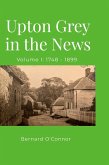A combination of archaeological and geomorphic techniques was used to study erosion hazard at Aboriginal shell midden sites in the Northern Rivers region of New South Wales, Australia. In the absence of artifactual material, biological and taphonomic analyses were undertaken to determine the likelihood a deposit was anthropogenic in origin. These analyses were also used to gain an understanding of site formation processes. The relationship between, and relative influence of, anthropogenic and non-anthropogenic erosive factors at shell midden sites in different geomorphic settings was used to formulate three erosion hazard assessment methods. Each method was designed to address the needs of a different stakeholder group. The archaeological method includes analysis of the effects of bank erosion, cultivation, anthropogenic and biological excavation, wind and wave erosion. Erosive factors are compared between sites and geomorphic settings. The rapid assessment technique designed for use by Aboriginal Land Councils and local Indigenous communities includes an Erosion Hazard Pro Forma and uses relatively simple geomorphic analyses which can be performed in the field. A handbook containing straightforward, user-friendly instructions on how to complete the Erosion Hazard Pro Forma is also included, along with a scoring system used to quantify erosion hazard and rank the study sites. A GIS model generated using soil, land use, vegetation and elevation data is also used to quantify erosion hazard and rank the study sites.
Hinweis: Dieser Artikel kann nur an eine deutsche Lieferadresse ausgeliefert werden.
Hinweis: Dieser Artikel kann nur an eine deutsche Lieferadresse ausgeliefert werden.








